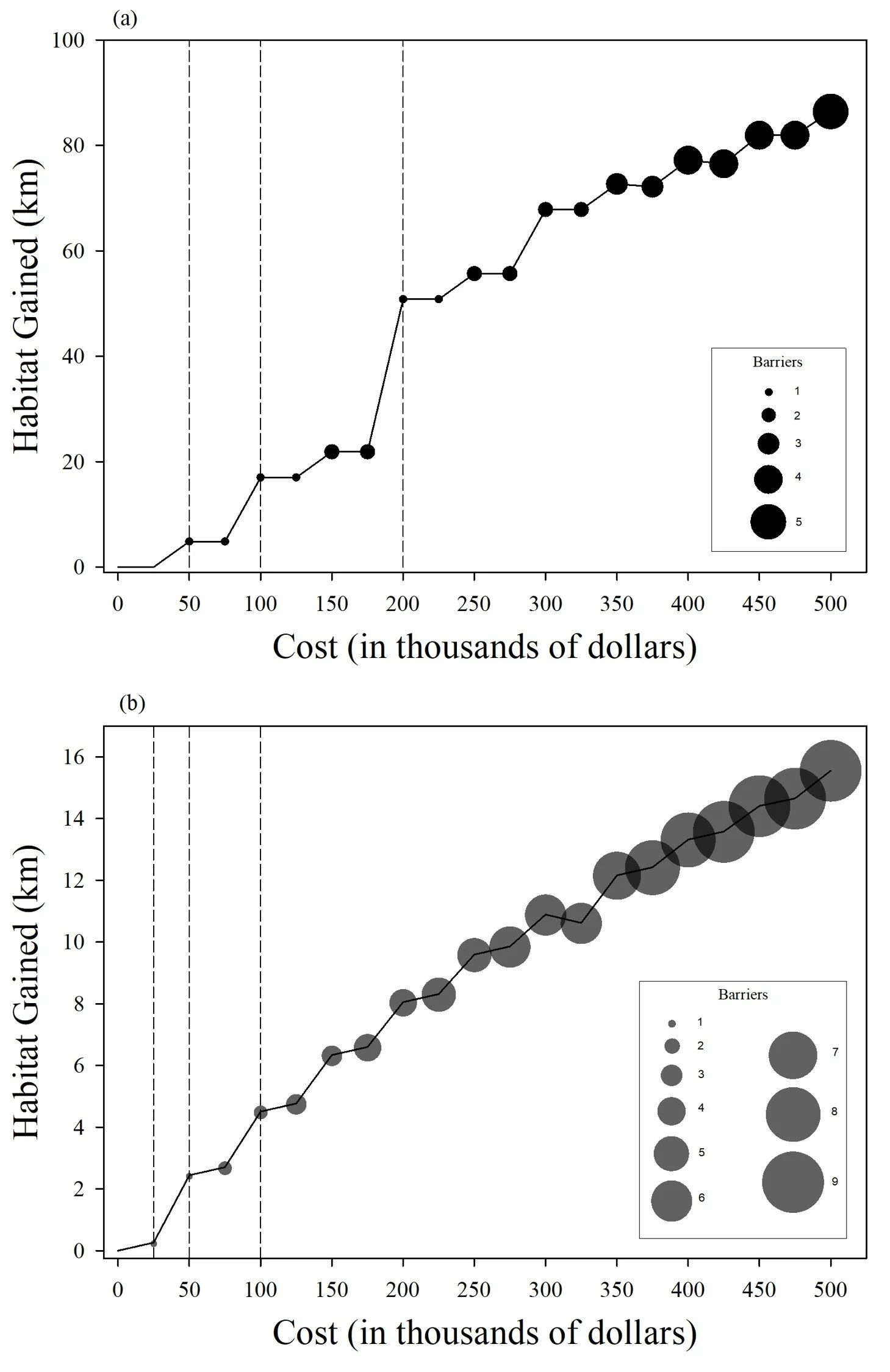Restoration and Connectivity
Restoring Function, Rebuilding Connection
Across the United States, rivers and streams are being reimagined as living systems rather than engineered corridors. My team studies how these ecosystems respond when barriers are removed, flows are restored, and habitats reconnect. Using a blend of long-term monitoring, telemetry, and modeling, we evaluate how fish populations and communities recover following dam removals and other restoration actions.
Our work provides decision-support tools that guide restoration planning and prioritize where investment will have the greatest ecological return. These approaches help determine whether restoration truly restores ecological function—or simply reshapes it.
In Florida, we optimized for barriers that could provide biggest conservation impact. The results of this work were the modification of at least four of the identified barriers.
From Fragmented Rivers to Connected Networks
Barriers such as dams and road crossings fragment habitat, constrain fish movement, and alter ecosystem function. We study how reconnecting these networks reshapes migration, spawning success, and species distributions. In systems like the Cuyahoga River, we’ve shown that restoring connectivity allows migratory fishes to recolonize historical reaches, enhancing biodiversity and resilience while reducing reservoir-adapted species.
Similar work across Texas, Florida, and the Great Lakes applies connectivity models to identify the physical and biological thresholds that determine recovery trajectories and to optimize the sequence of restoration investments across landscapes.
The Gorge Dam of the Cuyahoga River
Cuyahoga River Restoration & Area of Concern Research Portfolio
The Cuyahoga River, once emblematic of industrial pollution, is now a model for large-scale aquatic ecosystem recovery. Dr. Matthew Acre and the Quantitative and Conservation Ecology (QCE) Lab lead research quantifying how fish communities, population dynamics, and habitat connectivity respond to decades of remediation and dam removal in the Cuyahoga River Area of Concern (AOC). This work integrates long-term ecological monitoring with cutting-edge modeling and telemetry tools to assess how restoration actions translate into measurable biological recovery.
Through partnerships with the U.S. Environmental Protection Agency, National Park Service, Ohio Department of Natural Resources, and Summit Metro Parks, this research supports federal and state decisions on Beneficial Use Impairment (BUI) removal, guides future dam removals, and establishes metrics to evaluate recovery across the Great Lakes basin.
By combining historical Ohio EPA datasets with intensive monitoring and advanced analytical frameworks, Acre’s team provides the quantitative backbone for evaluating recovery. Their analyses reveal how fish assemblages reorganize, how hydrologic variability shapes ecological resilience, and how restored connectivity allows migratory species to reclaim historical habitats.
This integrative approach ensures that restoration success is not just qualitative but measurable, allowing managers to benchmark progress, forecast outcomes of pending restoration actions—such as the upcoming Gorge Dam removal—and apply these lessons to other Great Lakes systems undergoing similar transformation.





